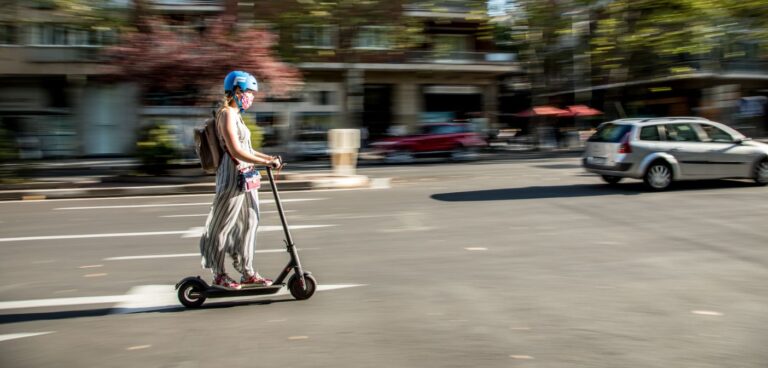New Imperial College London research, which uses simulations, aims to highlight the head injury risks to e-scooter riders from falls.
The project explained while more real-world accident data is needed to quantify risk on a larger scale, its simulations provide early-stage evidence that could help sharpen safety regulations regarding speed limits, helmet and wheel design, and pothole management.
Lead author of the study Dr Mazdak Ghajari from Imperial’s Dyson School of Design Engineering, said: “Our findings could add to the evidence governments need to make astute decisions on e-scooter safety, which we hope will reduce the likelihood of head, brain, and facial injuries.”
According to the study, around 4% of e-scooter riders wear helmets, compared with 50% of cyclists – and the relationship between e-scooter falls and the speed and design, road surface conditions like potholes, and wearing helmets, is poorly understood.
To address safety concerns for riders, Imperial researchers simulated 185 falls on three digital human body models that represented three different sizes: a 50kg weight 1.5m tall female, a 76kg 1.7m male, and a 101kg 1.9m male. These represent the 5th percentile of adult women and 50th and 95th percentile of adult men respectively.
The researchers simulated the unhelmeted models riding an e-scooter with 10in wheels at five different speeds over 12 differently sized potholes.
They found that even at lower speeds, the speed of impact between riders’ heads and the ground was comparable to the speed used to test bicycle helmets. Reducing e-scooter speeds from 30 km/h (18mph) to 20 km/h (12mph) led to a 14% reduction in this impact speed and a 12% reduction in the impact force, but falls at all speeds reached the threshold for skull fracture.
Although impact speeds echoed those from bicycle falls, the angles of heads at impact differed, highlighting the need for e-scooter specific helmet testing methods. 56% the impacts were to the forehead and rest of the skull, and 44% were to the face, indicating that open-face helmets like bicycle helmets could help prevent a slight majority of head and brain injuries but would not protect against facial ones.
“Unlike bicycle and motorbike helmets, we don’t yet have a gold standard for e-scooter helmets,” added Ghajari.
“Our research highlights the need for developing methods that are specifically designed to test helmets under impacts sustained by e-scooter riders, accounting for the angle of the head and likelihood of head and face injuries.”
Furthermore, the research found many e-scooter falls are caused by riders losing balance when striking road surface obstacles like cracks and potholes. The researchers tested the impact of pothole width and depth on impact speed and force on the head during falls.
Deeper potholes increased the likelihood and severity of falls. While potholes 3cm deep caused no falls in the simulations, potholes with depths of 6cm and 9cm caused falls in 75% of cases. The simulations suggest that for scooters with smaller wheels, the depth at which falls happen would likely be smaller.
The findings highlight the need for better pothole management from local authorities if e-scooters are to become commonplace on roads.
The authors note that more research is needed, including real-world data, on the biomechanics of falls and the impact on the brain and head. They hope the findings can assist authorities and e-scooter hiring companies to take more informed actions and produce more research on the effect of e-scooter and helmet design, road surface conditions and speed limits on e-scooter falls.





